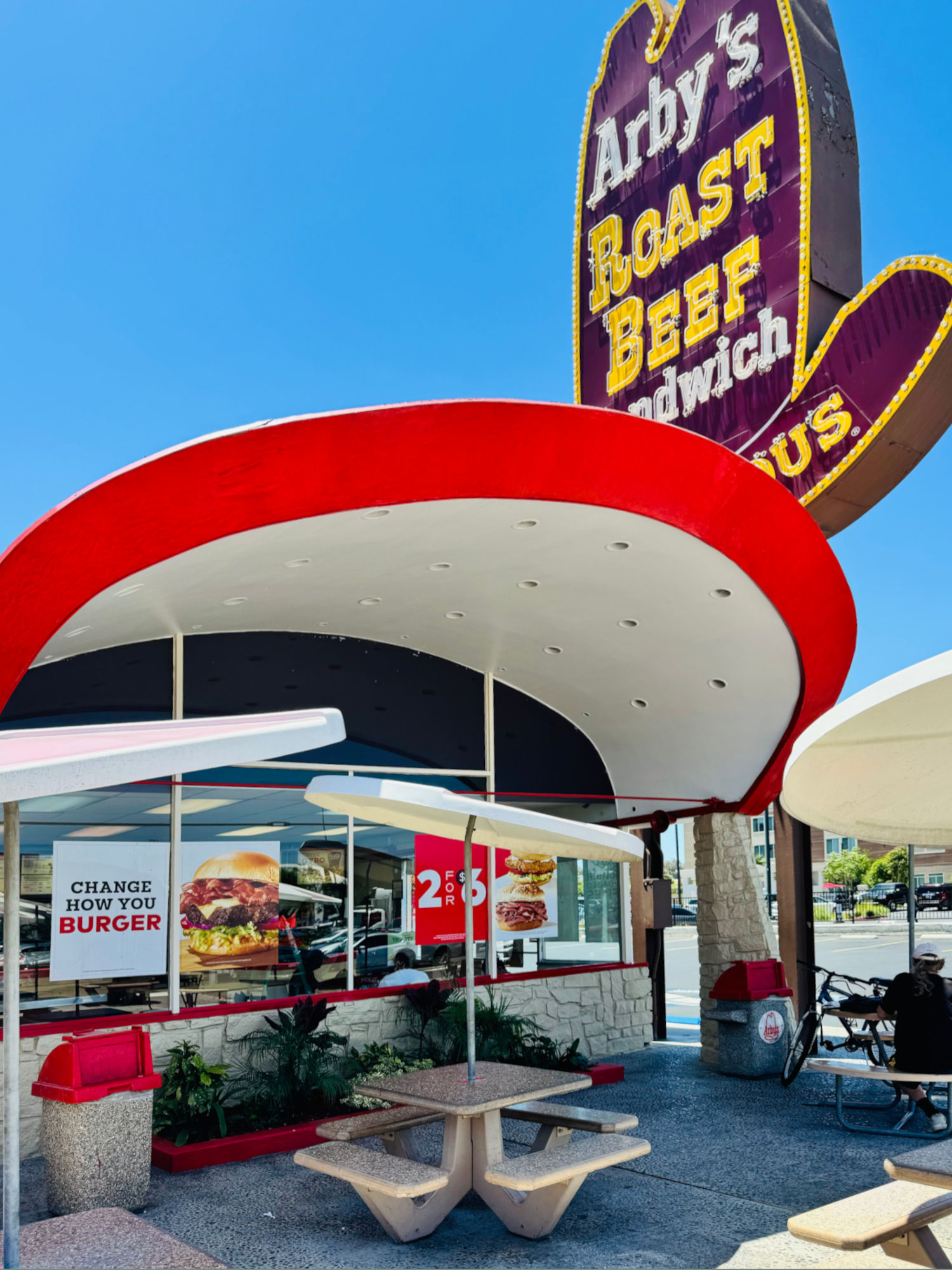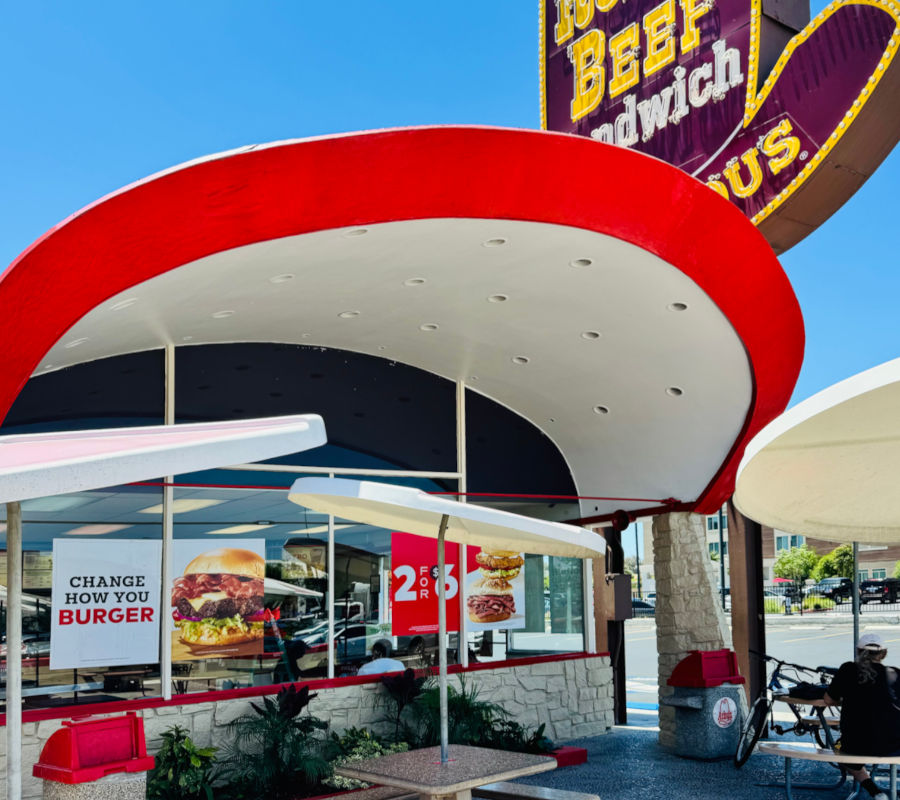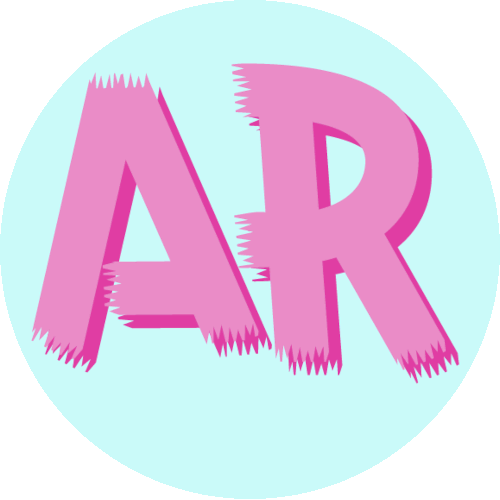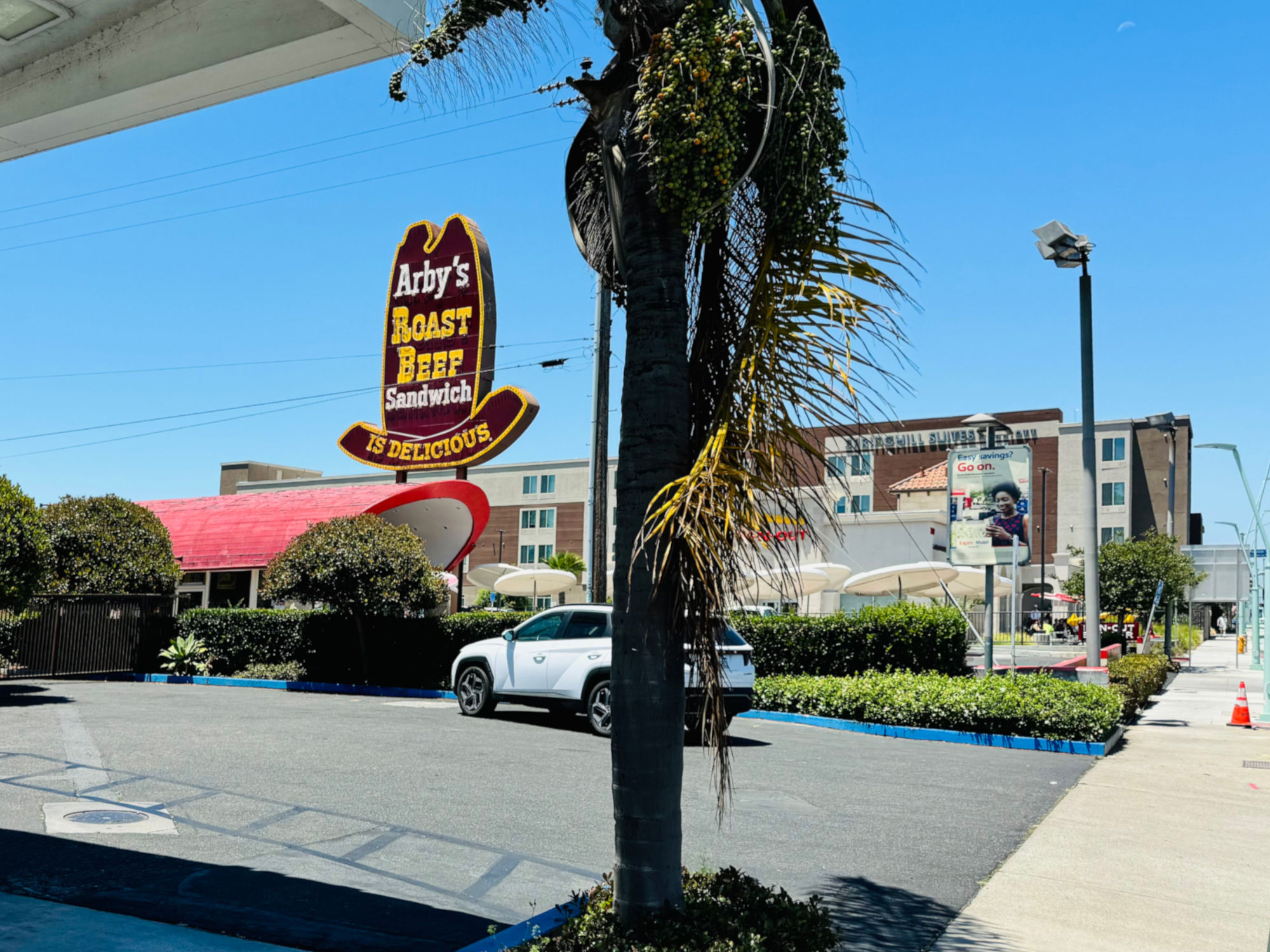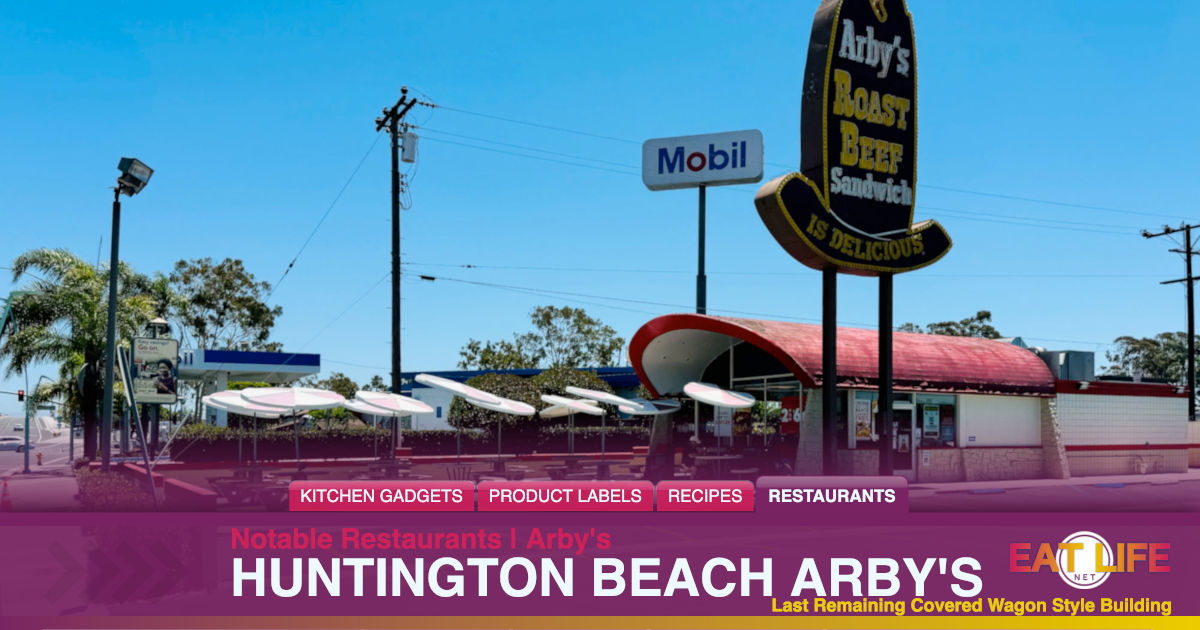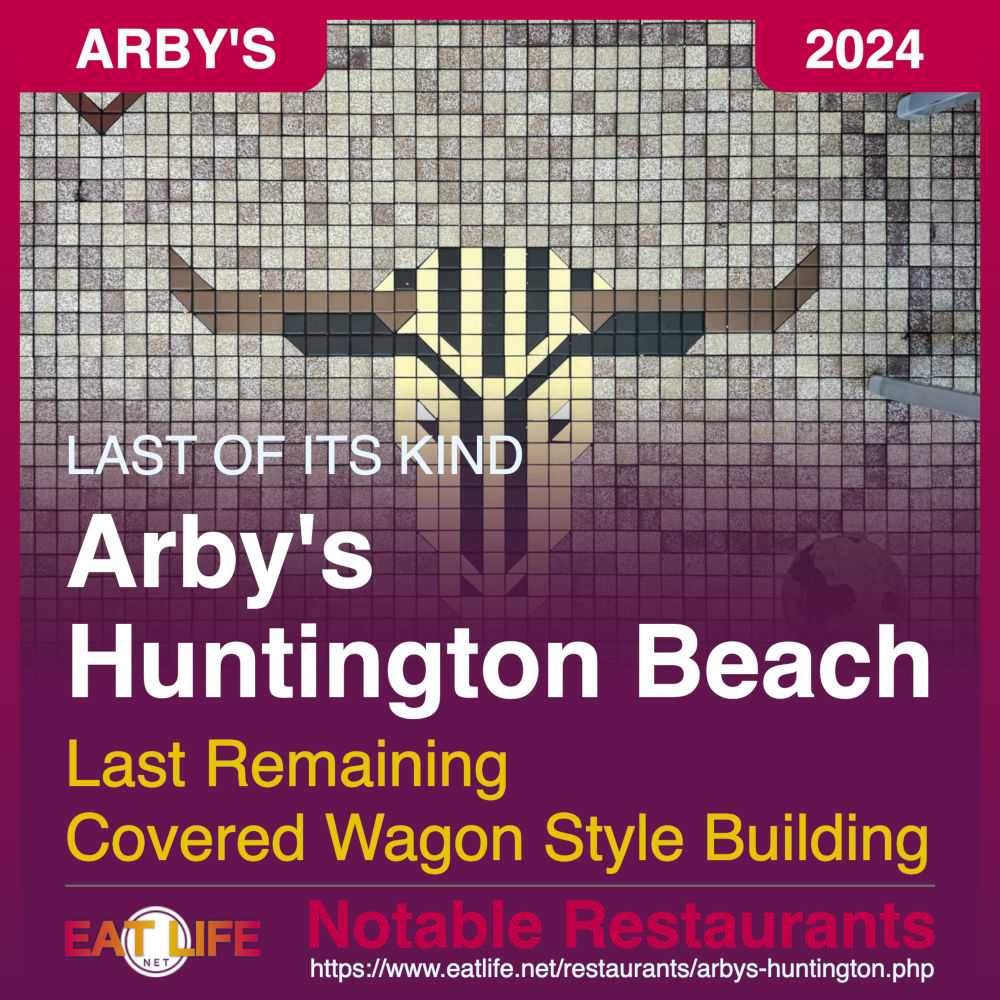They used to be everywhere in the 1970s but are all long gone by now because they were so small and not set up for a drive-thru window. This one is going to be demolished soon too bad.
7942 Edinger Ave, Huntington Beach, California
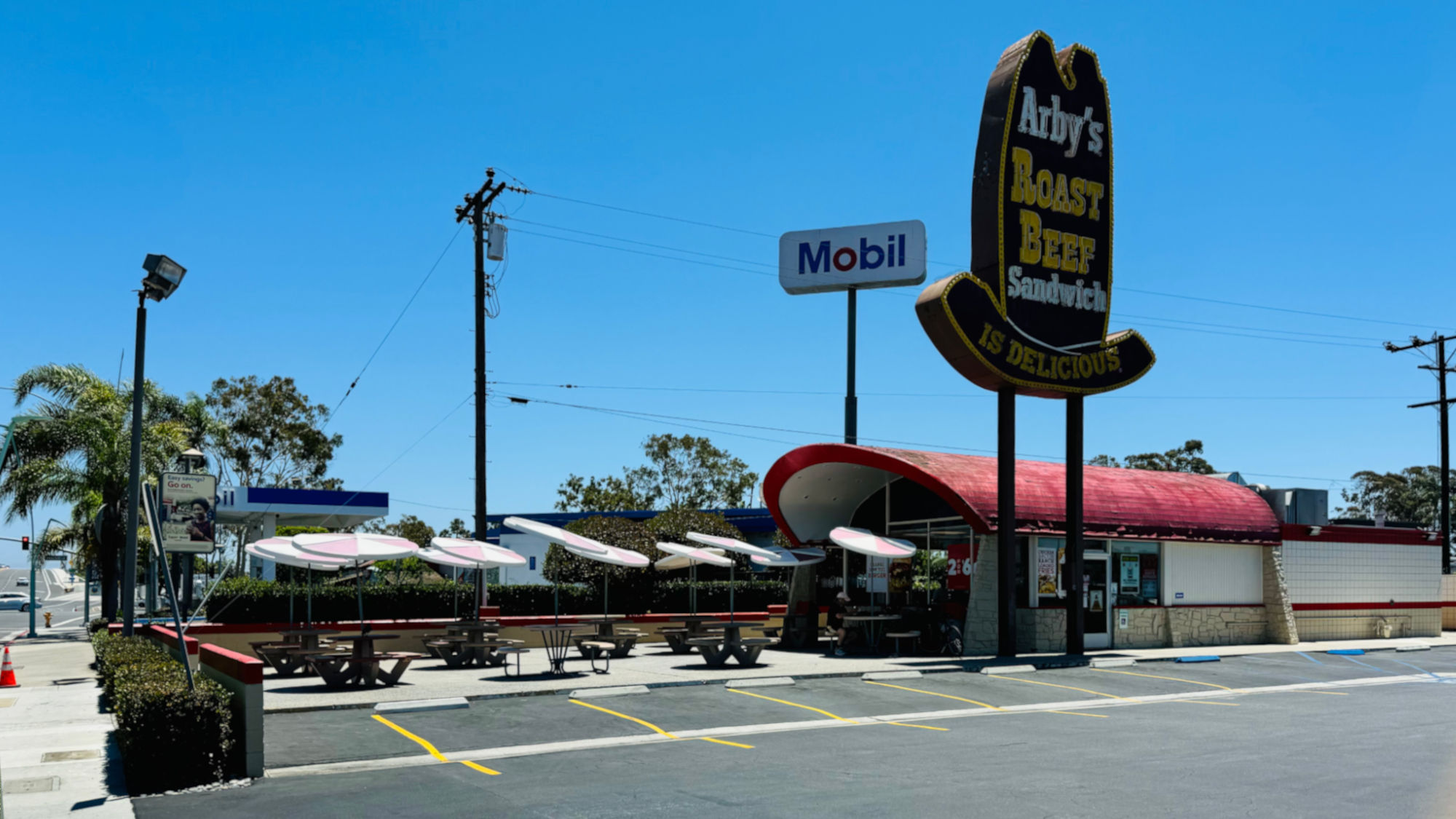
Atomic RedheadHuntington's Vintage Arby's
Back in 2018 I took a day to drive down Beach Boulevard from the 91 all the way to the beach, photographing various signs and buildings. During that excursion I stumbled across a vintage Arby's. The massive ten gallon hat neon sign towered over the curved building, emulating a covered wagon. I stepped inside and my jaw it the floor, because of the floor, which was a beautiful mosaic done in a cattle theme. I have returned several times because it's so gosh darn amazing! But sadly I was recently hit with the news that the owner has filed for demolition permits and rebuild with a new "McModern" style. So I knew I needed to go and spend some quality time with it before it's gone for good.With its western flair, the early eateries were a modern take on programmatic architecture, evoking a conestoga wagon. The cowboy theming continued with a cattle, rope, and brand mosaic tile floor, and the towering ten gallon hat sign featuring neon and bulbs. During the later part of the 1960s these began to pop up across the country.
The Retrologist shared an ad that dated this particular restaurant to 1969, making it just over 50 years old. At 50, this location is still looking good with a few minor things here and there. It's easy to see that at the owner cared about the uniqueness of the location, giving it a fresh coat of paint, keeping the neon working, and even putting spikes on the sign to deter birds from landing on it. I just wonder what has changed. Many older fast food restaurants have updated the design of their restaurants to accommodate drive-thrus (you'll notice this a lot with Taco Bell. If you spy an old Taco Bell that is no longer a Taco Bell you will likely find a newer one, with a drive-thru nearby)
The sad fact is that these Arby's are disappearing fast. Another great website, Roadside Architecture has done an amazing job logging vintage Arby's buildings, and noting that many have shuttered in recent years. Some locations have saved their signs, but this one in Huntington Beach is one of the last remaining fully intact locations in the world!
FacebookArby's
If you were like, "Hey, does the first Arby's kinda look like a covered wagon?" We'd be like, "Yes. Yes it does." The design of the first Arby's locations were inspired by the rounded tops of covered wagons.
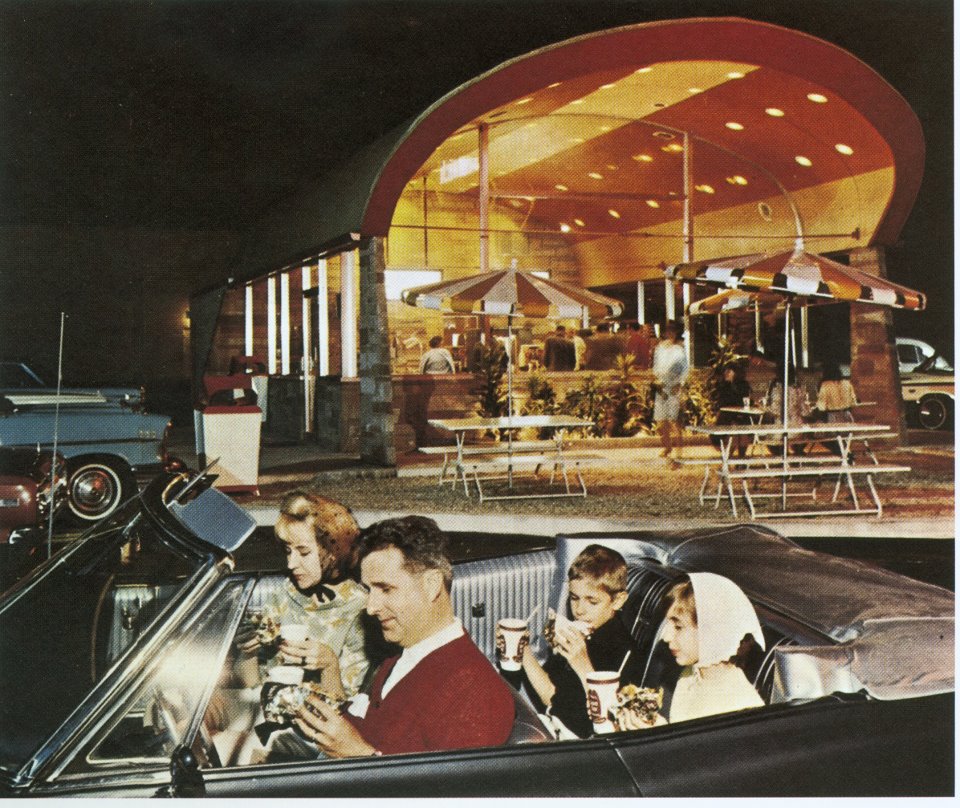
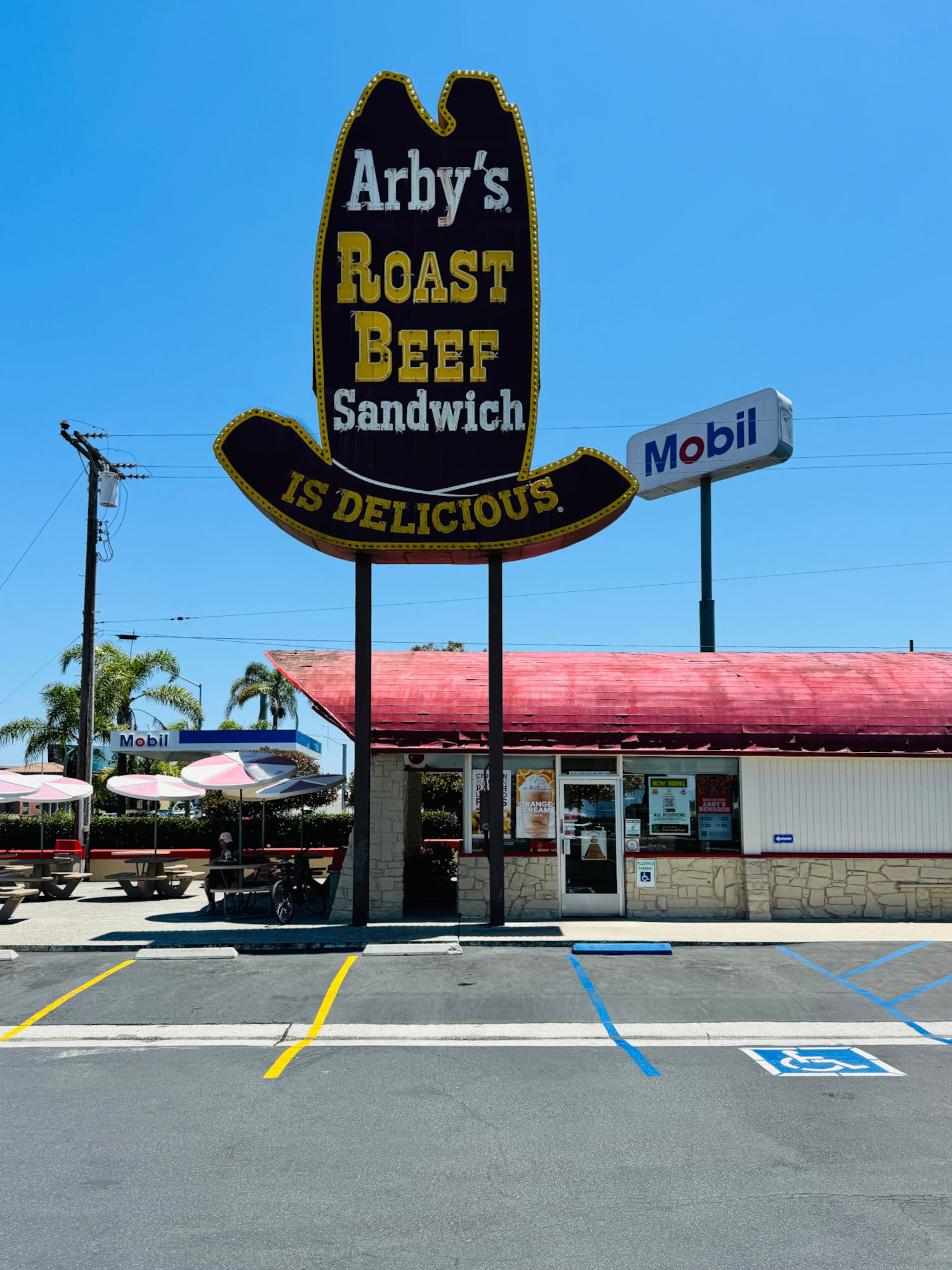

Roadside ArchitectureConestoga Wagon
The first Arby's opened in 1964 in Boardman, OH and featured the Conestoga wagon style buildings and ten-gallon hat signs. The buildings were designed by Wily Christian Riedel. The roofs were originally yellow. The covered wagon building was phased out in the mid-1970s. Many have been adapted by other businesses.Huntington Beach, California
This Arby's in Huntington Beach was built in 1969. It still has the original hat sign, covered wagon building, and tile floor. In 2024, it was announced that the building and sign might be replaced with modern versions. Preservationists are trying to prevent that from happening.
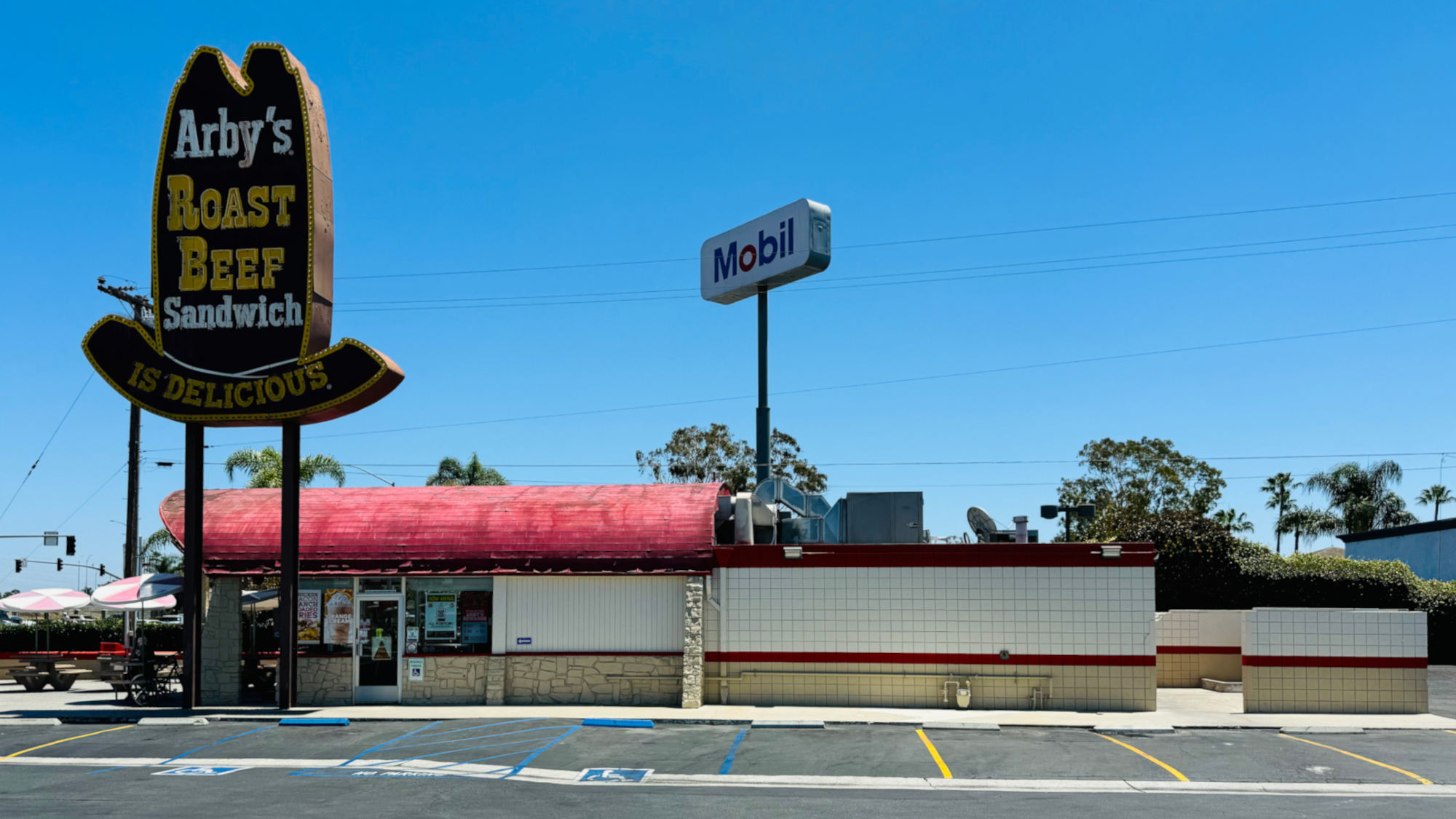
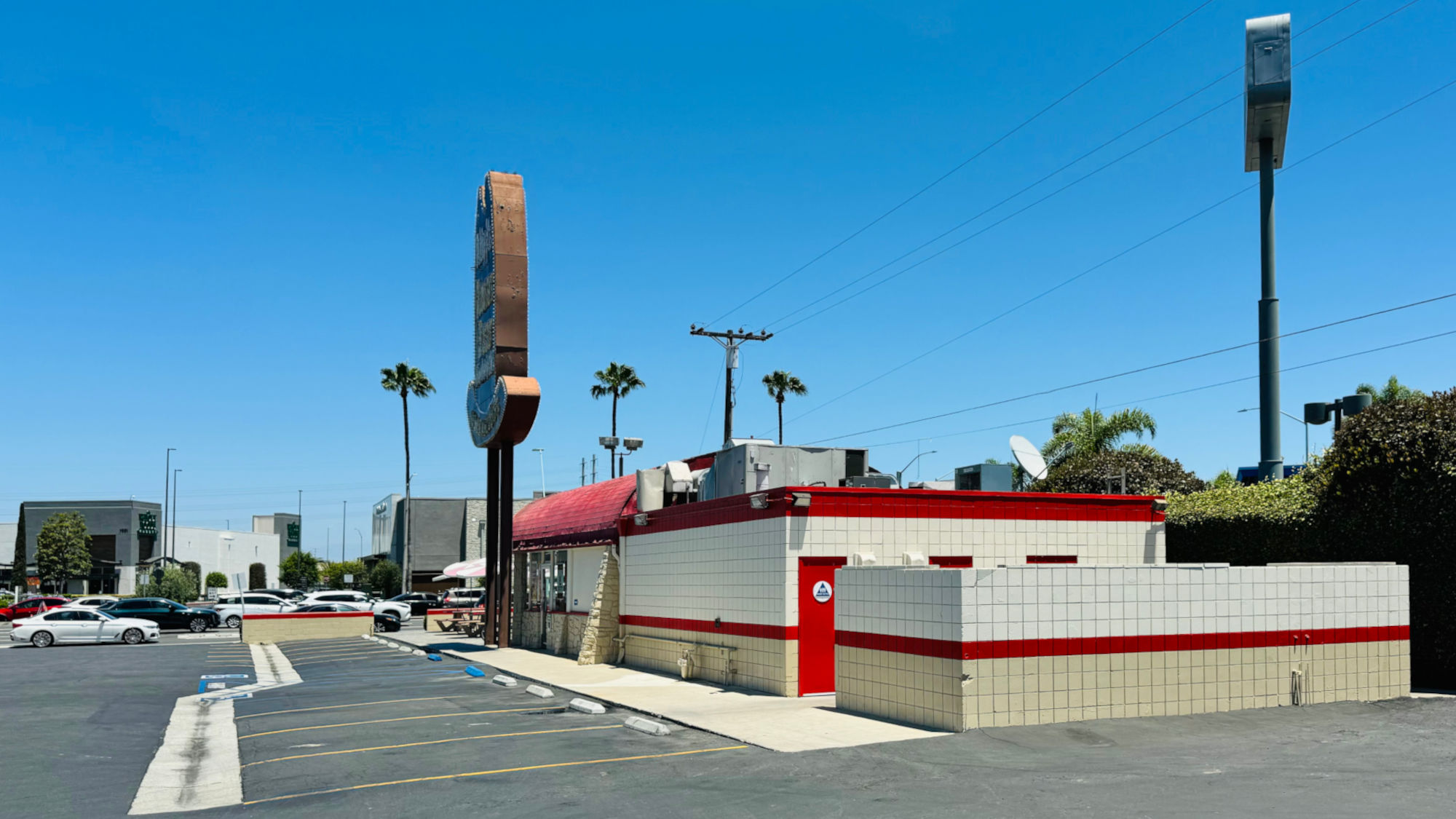
The RetrologistArby's
There are rumblings about demolition plans for a beautifully intact vintage Arby's in Huntington Beach, California.I made my second visit to the store at 7942 Edinger Ave. (off Beach Boulevard) a couple of weeks ago, and finally shot the incredibly rare Western-themed mosaic floor inside.
- The floor mosaic is an extraordinary survivor and is in remarkable condition, considering the pounding it has been getting since 1969.
The original Conestoga wagon building - and the neon-and-light-bulb "10-gallon hat" sign - survive, too. This store opened in January 1969, or perhaps just before. An ad touts the news in the Jan. 7, 1969, edition of the Orange County Register.

Incredibly, the place today looks EXACTLY AS IT DID in this 55-year-old advertisement.
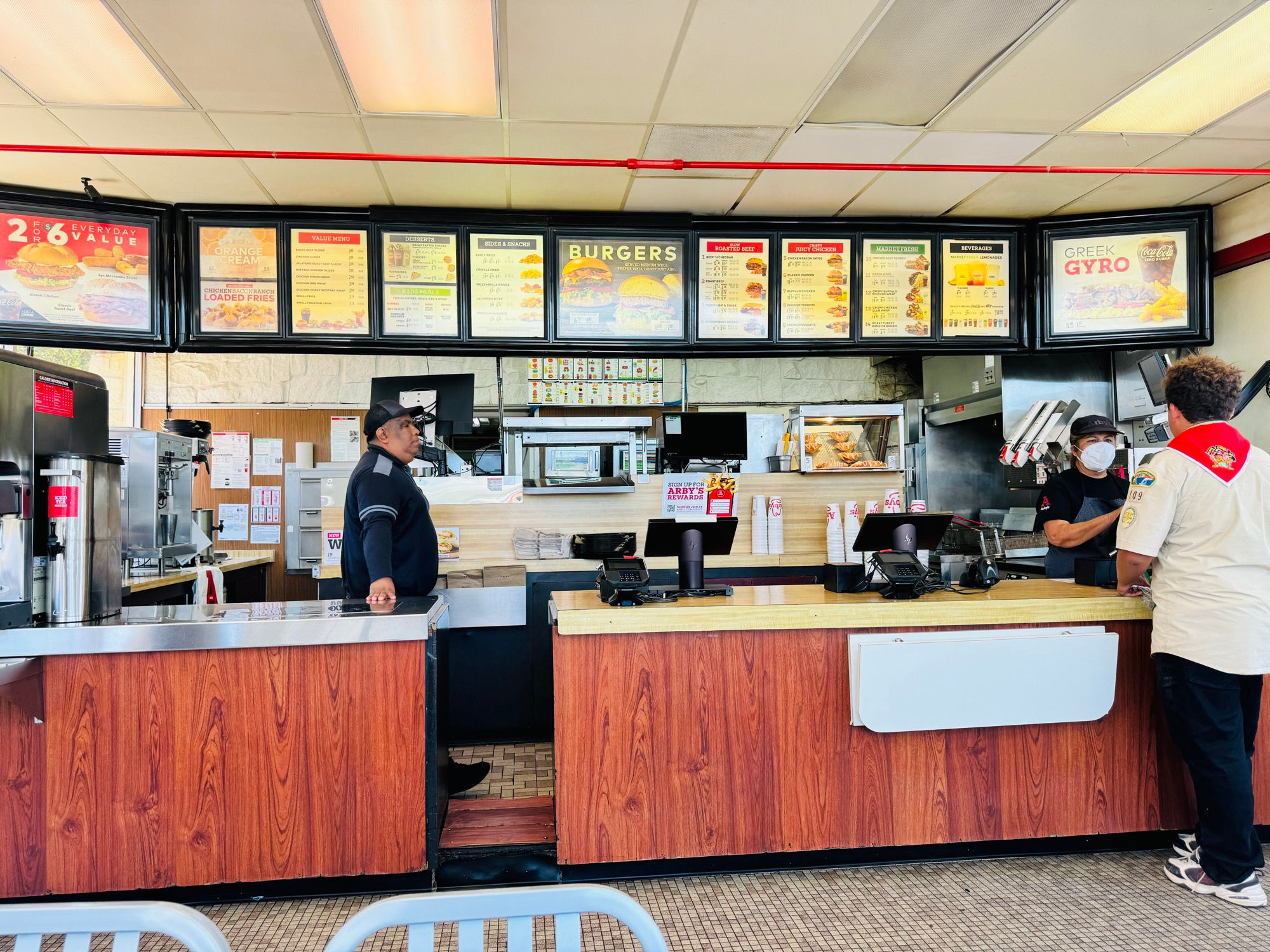
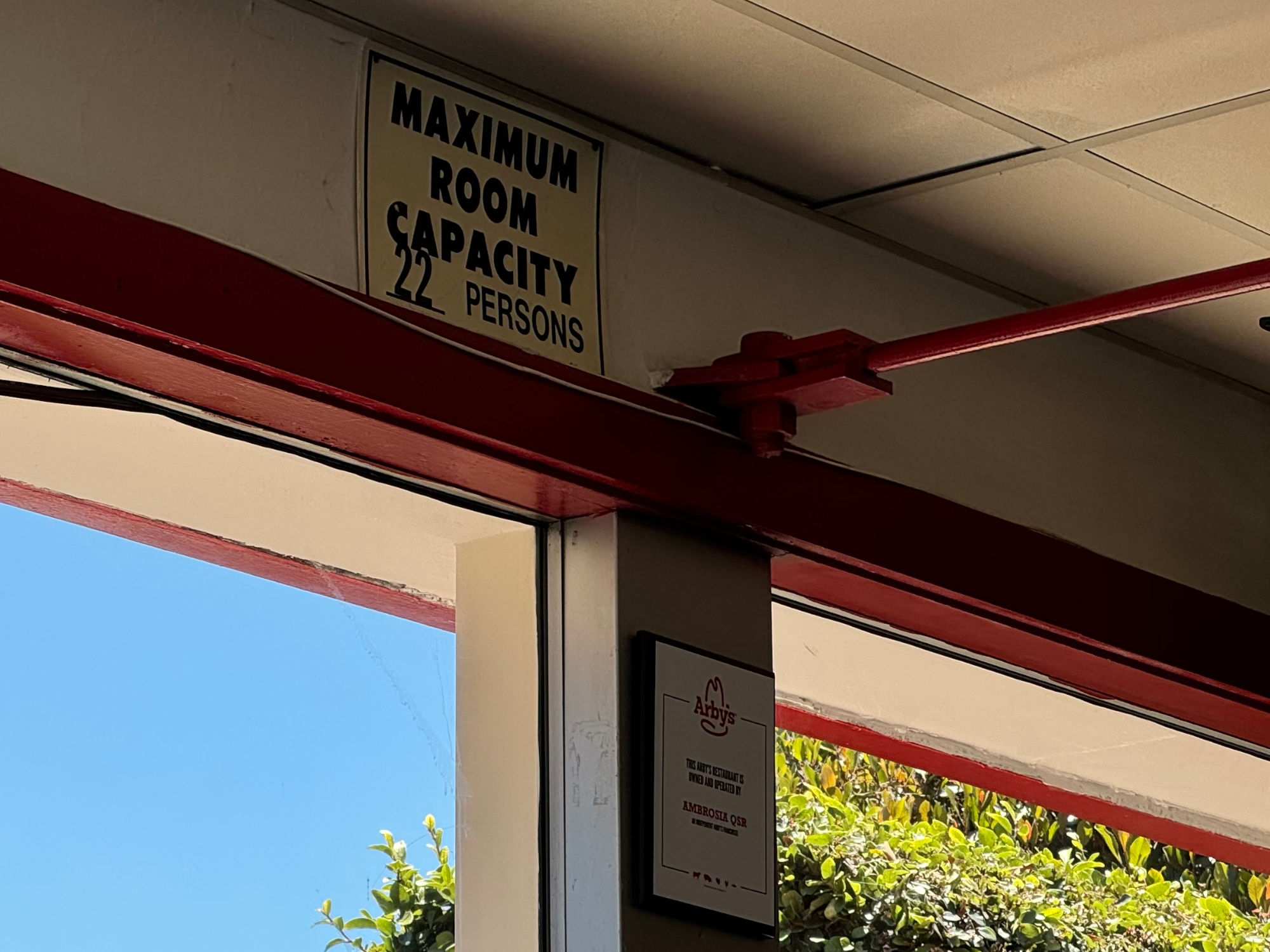






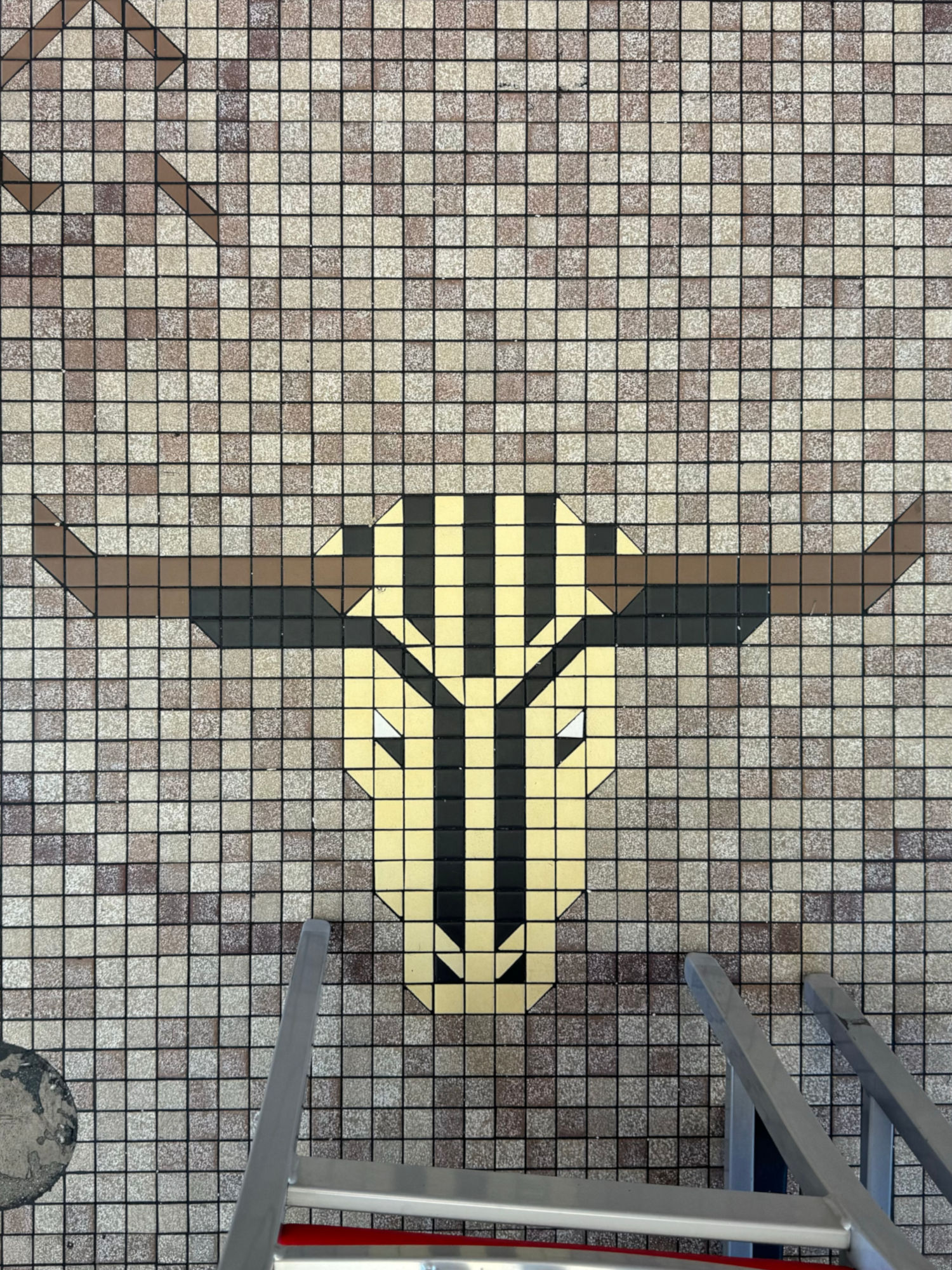
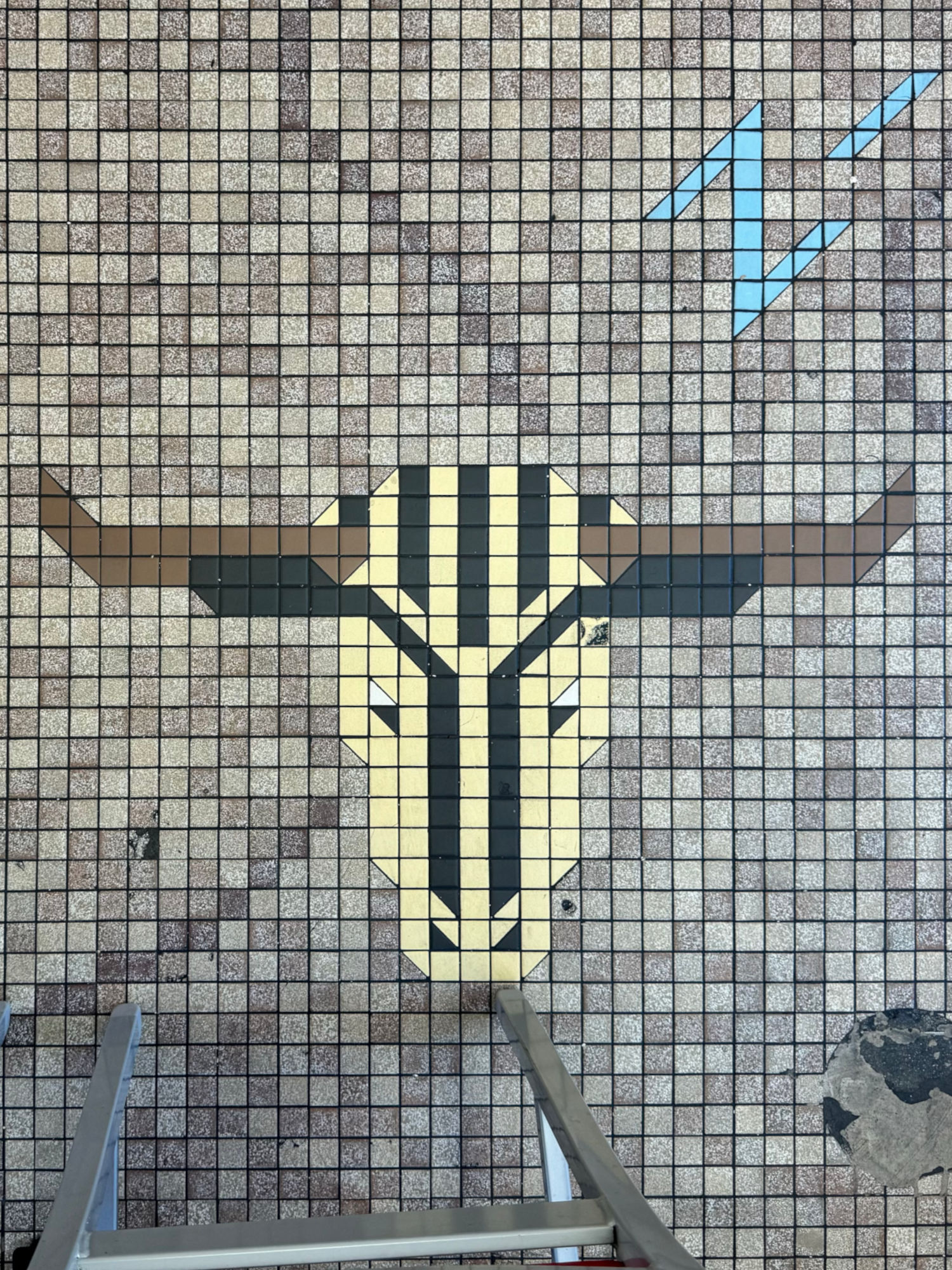
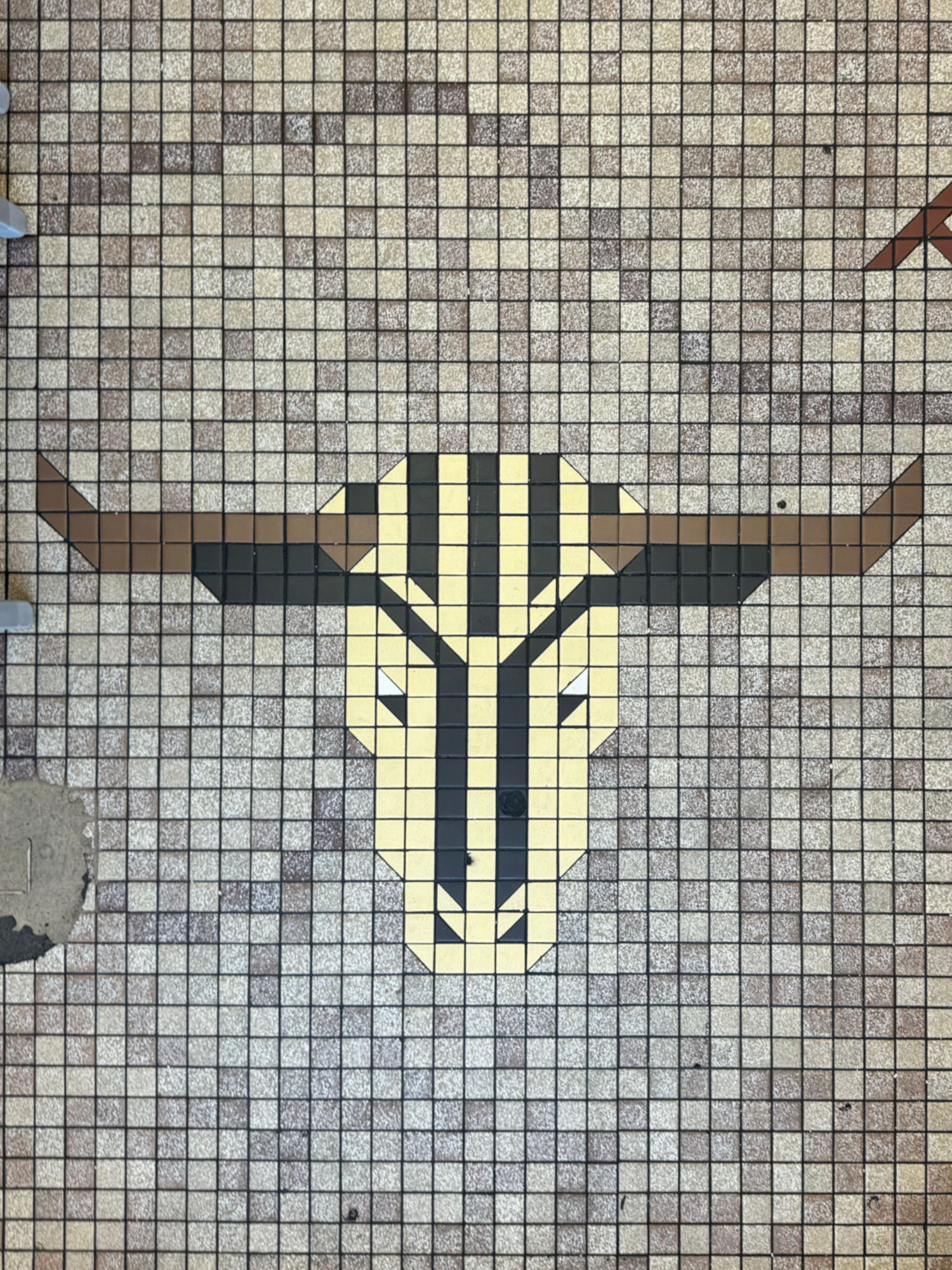
WIKIPEDIAThe Conestoga wagon
Also simply known as the Conestoga
obsolete transport vehicle that was used exclusively in North America, primarily the United States, mainly from the early 18th to mid-19th centuries. It is a heavy and large horse-drawn vehicle which, while largely elusive in origin, originated most likely from German immigrants of Pennsylvanian Dutch culture in the Province of Pennsylvania in the early 18th century. The name "Conestoga Wagon" probably derived from the Conestoga River Valley settlement area in the province and saw usage as early as 1717, although it is not known whether the first wagons referred as such had similar builds as later Conestoga wagons.
Conestoga wagons are larger and more robust variants of covered wagons, sharing similarities in usage of white hemp cloths to cover the wagons, large wheels to travel on non-macadam road surfaces, and intended usage as vehicles to transport items elsewhere. It differs from most other covered wagon variants mainly by the curvature of the wagon body's sides and floor, which replicated boats and served the dual purposes of keeping the luggage centered while also looking visually pleasing to wagon customers. They were operated by a team of four to six horses of a now-extinct breed, a driver, and sometimes helpers. Conestoga wagons early on may have been produced by farmers but later were often made by teams of blacksmiths, wheelwrights and wagon makers.
- They were primarily used as transport vehicles that could have carried 6 short tons (5.4 tons) to 8 short tons (7.3 tons) of raw goods from rural areas to towns or cities of the eastern United States, typically bringing back commodified goods in exchange.
- Common presences in the northeast, especially Pennsylvania, as thousands of them may have traveled to different areas annually.
- Although it was sometimes used for westward frontier travel in the 19th century, lightweight and cheaper covered wagons were generally preferred by the pioneers.
- The Nissen wagon, likely deriving from Conestoga wagons, was also lightweight despite superficially resembling them and was a dominant vehicle type in the southeastern states compared to the heavyweight wagons.
Conestoga wagon usage likely declined as a result of displacement by canals and railroads in the 19th century, which proved to be more efficient means of transporting goods. Despite this, the cultural legacy of the Conestoga wagon endured in the later 19th and 20th centuries as they and other covered wagons became icons of early American history including pioneering, although the romanticized image waned by the 21st century.
WikipediaThe Conestoga Horse
Specialized breed of heavy and large draft animal as well as one of the few horse breeds to have originated from North America. The origins of the breed is unknown, but they probably originated from a few individual horses from Pennsylvania. They were popularly used because of their abilities to haul loaded heavy Conestoga wagons. Conestoga horses typically came in black or bay hair coat colors but were sometimes dapple gray. The Conestoga horse breed went extinct likely as a result of the decline of Conestoga wagon usage.
